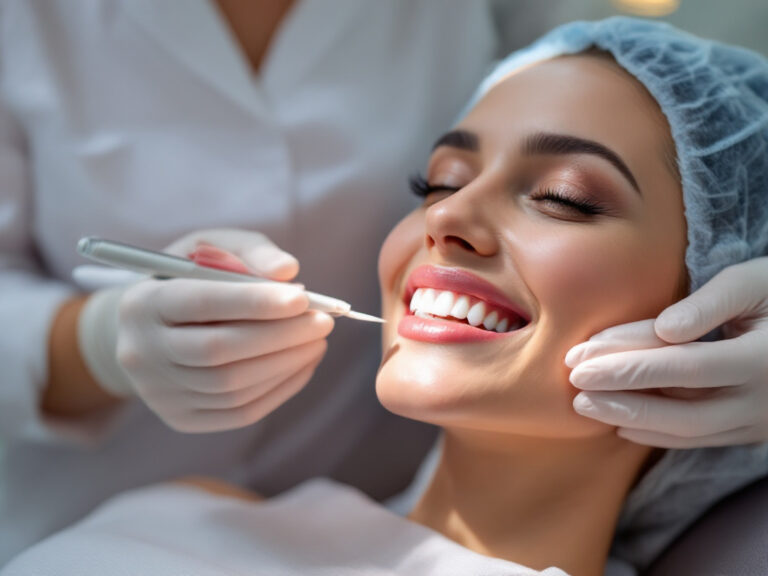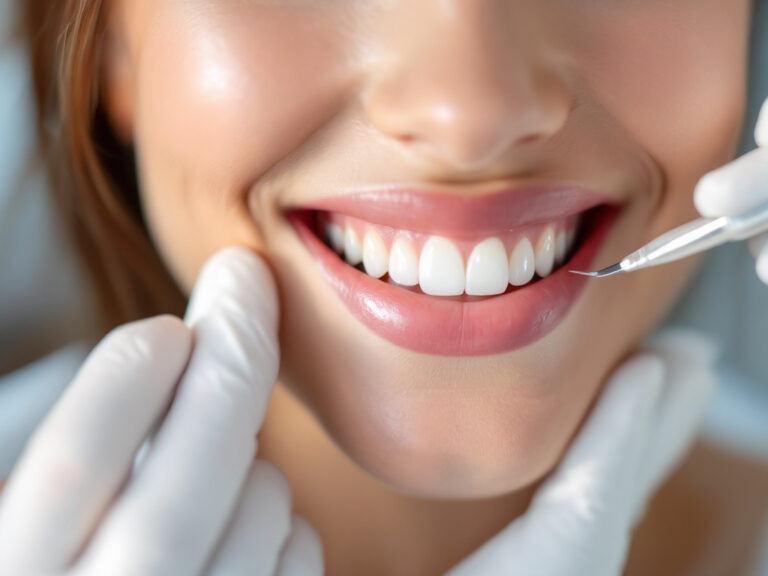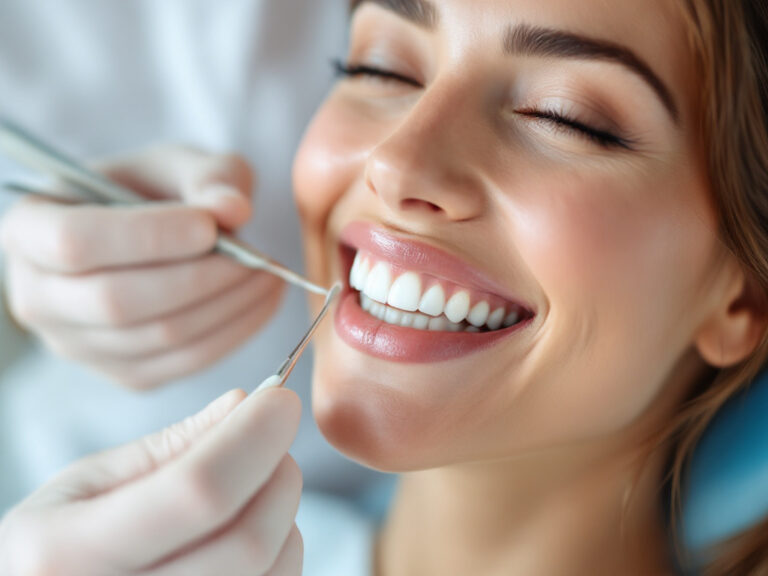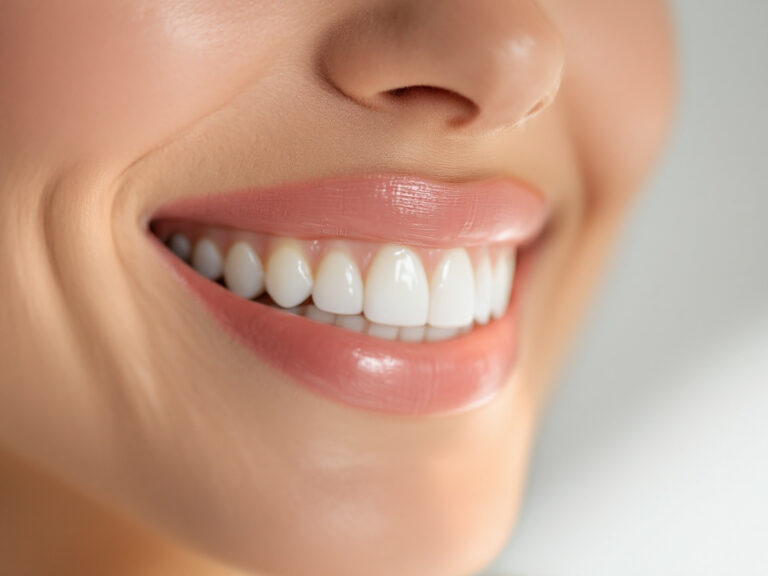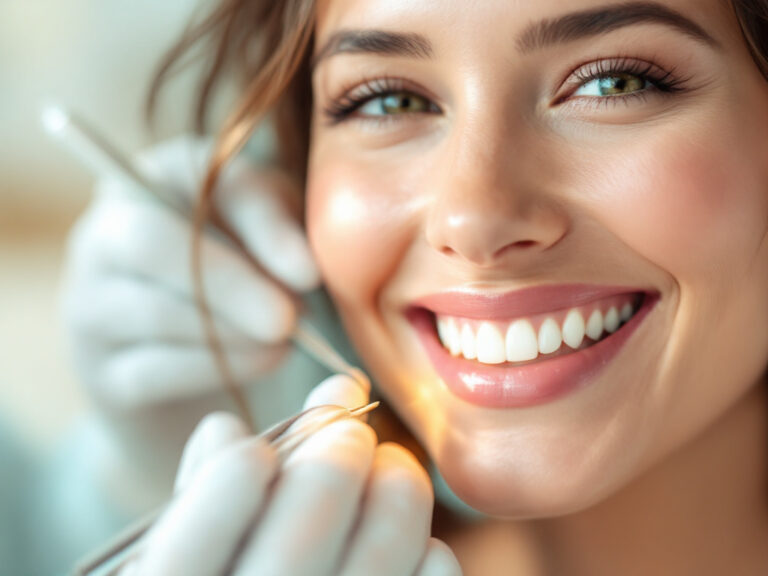Bite issues at a glance
If you are exploring bite issue treatment with aligners, it helps to understand the reasons behind bite misalignments in the first place. A “bite” describes how your upper and lower teeth come together when you close your mouth. In an ideal bite, these teeth fit neatly, distributing pressure evenly when chewing or speaking. Unfortunately, many people develop common alignment problems like overbite, underbite, crossbite, or open bite. Each variation can cause discomfort, affect your confidence, and complicate tasks like eating or speaking normally.
When you consider how fundamentally important a healthy bite is, taking action becomes even more crucial. Clear aligners offer significant advantages for a range of bite issues, especially those deemed mild to moderate in complexity. According to multiple studies, clear aligners deliver a success rate of 80-90% for mild to moderate concerns, offering clinically acceptable outcomes comparable to traditional braces (Impact Orthodontics). These transparent trays gently shift teeth to their correct positions over time, helping you achieve a balanced bite and renewed self-assurance.
At Belmont Dental, we take pride in offering you or a loved one a comprehensive approach to family dentistry, cosmetic care, and restorative needs. Our patient-focused philosophy centers on personalized guidance, allowing you to feel understood and supported. In this article, you will discover how clear aligners address bite issues effectively, why timely treatment matters, and how we at Belmont Dental strive to ensure a comfortable, confidence-building experience.
Understanding bite issues
Bite misalignments develop from many factors, including genetics, prolonged thumb sucking, premature loss of baby teeth, or even missing permanent teeth (ALIGNERCO). Each of these issues can lead to uneven contact between the upper and lower teeth. This unevenness may stress the jaw joint (temporomandibular joint, or TMJ), triggering recurring aches and sometimes headaches or facial pain.
Types of common bite issues
-
Overbite
In an overbite, the top teeth extend too far over the lower teeth. Mild overbites may not cause major difficulties, but more pronounced ones can lead to jaw strain, uneven tooth wear, and possible discomfort when chewing. -
Underbite
With an underbite, the lower teeth extend in front of the upper teeth. This particular alignment can make biting and chewing challenging, often resulting in jaw stress and an imbalanced facial appearance. -
Crossbite
A crossbite occurs when some upper teeth rest inside the lower teeth, rather than outside. This misalignment can wear down teeth unevenly and put pressure on the jaw joint and surrounding muscles. -
Open bite
When the front teeth do not meet and a gap remains even if the back teeth touch, it is considered an open bite. This can cause speech issues and difficulty biting through food, such as sandwiches or slices of fruit. -
Mild crowding or spacing
For some, the main concern involves a minor overlap (crowding) or small gaps (spacing). Although these conditions can be purely aesthetic, they can still affect your speech and make thorough teeth cleaning more challenging.
By identifying and addressing these bite concerns, you can avoid potential long-term complications that impact self-esteem, wellness, and overall dental health.
Why bite issues matter
You might wonder if a slight overbite or a small gap is worth correcting. The answer often lies in how you feel daily and the long-term effects of leaving bite misalignments unmanaged.
Potential implications of misalignment
-
Wear and tear
The teeth are designed to interact smoothly when chewing. If they do not fit correctly, certain areas bear more force than others, speeding up wear, chipping, or even cracking. -
Jaw pain and tension
Chronic jaw tension, headaches, and neck aches can indicate bite problems. More than 10 million Americans struggle with complications related to the jaw joint, known as TMDs (BLVD Dentistry). -
Speech difficulties
Pronouncing certain sounds can be tough if the teeth and tongue cannot move as needed. A misaligned bite may lead to lisps or difficulty enunciating. -
Lower self-confidence
Even cosmetic concerns, like spacing or a protruding jaw, can hamper your overall self-esteem. A misaligned bite may cause self-consciousness about laughing or smiling in social and professional settings.
Seeing the bigger picture
If left untreated, bite issues can evolve, creating more serious oral health complications or chronic discomfort. Thankfully, bite issue treatment with aligners helps realign teeth discreetly, often reducing potential hazards to your teeth, gums, and even your quality of life.
At Belmont Dental, we believe in the power of a balanced bite not just for oral health, but for personal comfort and confidence. Whether you are dealing with mild crowding, an underbite, or an open bite, we focus on timely intervention, ensuring that minor adjustments today can prevent bigger complications tomorrow.
Comparing aligners to traditional braces
Deciding between clear aligners and traditional braces is an important step as you explore the best way to correct your bite. Both approaches can address a wide array of issues, but they differ in appearance, comfort, and severity of cases they can handle.
Key differences
Clear aligners are virtually invisible trays made of smooth plastic that gradually reposition teeth. They must be worn 20-22 hours a day to ensure successful results (Elements Dental Studio) and allow you to remove them for meals or cleaning. On the other hand, traditional braces rely on brackets and wires, which remain fixed in place until treatment finishes. Although effective, braces sometimes irritate gums or cheeks, especially if wires loosen between appointments.
Here is a brief comparison table to help weigh your options:
| Feature | Clear Aligners | Traditional Braces |
|---|---|---|
| Appearance | Transparent, low-profile | Metal or ceramic brackets with visible wires |
| Comfort | Smooth edges, minimal irritation | Potential for wire pokes and bracket irritation |
| Removability | Aligners removed for eating and cleaning | Fixed in place, cannot be removed except by dental professionals |
| Suitability for complex cases | Effective for most mild to moderate issues but less suited for severe problems | Handles severe misalignments, complex bite issues, and major rotations |
| Treatment duration | Typically 12-18 months for moderate cases, sometimes as short as 6 months | 12-24 months, can be longer for complex alignment |
| Oral hygiene | Easy to maintain since trays are removable | More challenging, extra care needed to clean around brackets and wires |
In complex bite situations (like severe jaw discrepancies or severely rotated teeth), traditional braces could still be the better choice (Impact Orthodontics). However, for many mild to moderate bite issues—especially when aesthetics and convenience are top priorities—aligners are a compelling option.
How bite issue treatment with aligners works
The science behind bite issue treatment with aligners is both cutting-edge and straightforward. Using advanced imaging technology, your dentist or orthodontist maps out tooth movements in small increments. At Belmont Dental, we rely on a comprehensive digital scan to plan how each aligner will shift your teeth closer to the ideal alignment.
Step-by-step process
-
Clear aligner consultation
During your first visit, we examine your teeth, gums, and jaw, discussing whether aligners suit your particular bite issue. We encourage you to schedule a clear aligner consultation if you suspect you have a misalignment. -
Digital imaging and treatment plan
A 3D scan captures the current positions of your teeth. Using computer software, we visualize how each tooth will move over several months, allowing you to see a preview of expected results. -
Custom-made aligners
The aligner trays are fabricated to match the proposed movements of your teeth. Every set of aligners is slightly different, applying gentle pressure to guide the teeth to their next position. -
Regular checkups
You switch to a new aligner set every one or two weeks, according to the plan. Typically, you visit the dentist every 6–8 weeks to confirm progress and make any needed adjustments (ADW Center). -
Commitment to daily wear
Aligners must be worn for 20-22 hours per day. Removing them for too long may lead to delayed results. For many, this factor is the biggest mental hurdle—yet essential for success. -
Completion and retainers
Once treatment concludes, you usually wear a retainer to help teeth remain in their new positions. Retainers are critical for preserving the outcome of your treatment.
Many patients find that consistent use of aligners shortens overall treatment time, especially when compared to older forms of braces that need more frequent mechanical adjustments (Advanced Dental Wellness Center). Moreover, you can remove aligners before your favorite meals, sporting events, or social gatherings, making them a flexible choice for everyday life.
Benefits of choosing Belmont Dental
You may feel a bit overwhelmed with all the decisions to make about your bite health, orthodontic methods, and long-term dental needs. At Belmont Dental, we are here to guide you every step of the way by focusing on comprehensive family dentistry, patient education, and personalized treatment plans.
Our patient-first ethos
When you or a loved one chooses Belmont Dental for any service—from porcelain veneer placement to a sport-friendly custom mouth guard service—you receive respectful, empathetic care at every turn. Our team recognizes that a supportive environment contributes to a more comfortable, empowering experience. We value your questions and concerns, providing clear answers to help you make informed decisions about your orthodontic or dental health.
Full range of services for confidence and health
We know that dental well-being is seldom achieved through a single procedure. That is why we excel at an array of restorative, preventive, and cosmetic treatments to keep your teeth and gums in top shape. Whether you are interested in a cosmetic smile makeover that includes invisalign clear aligners or need a dental bonding service to fix small imperfections, Belmont Dental tailors every solution to your specific timeline and needs.
We also address total wellness by offering:
- Cosmetic procedures such as teeth whitening treatment for a brighter smile.
- Restorative care such as dental implant restoration for missing teeth.
- Night guard and mouth guard provision with our night guard fabrication to manage bruxism and protect teeth.
This holistic, comprehensive approach ensures that you and your family always have a trusted resource for maintaining and enhancing oral health.
Personalized guidance for a healthier bite
While aligners are a powerful option, they may not be suitable for everyone. Extreme skeletal jaw problems or severely rotated teeth sometimes call for alternate solutions like traditional braces or surgical interventions. Our process starts with a thorough orthodontic consultation to identify the best path forward. If we find that aligners are right for you, we explain each step so you know exactly what to expect.
At Belmont Dental, bite issue treatment with aligners is more than a cosmetic fix—it is an investment in your overall wellness and confidence. Our aim is to help you achieve a functional, vibrant smile for many years to come.
Step-by-step plan for your comfort
Embarking on any orthodontic journey can feel daunting. Having a concise plan that clarifies what to expect can ease those jitters.
Your journey with Belmont Dental
-
Initial contact
Our staff happily schedules an appointment at a convenient time for you. If you suspect a bite problem, mention that so we can arrange the right evaluation. -
Orthodontic assessment
During the visit, we examine your mouth and use digital tools to create a picture of your bite. This could include scans, images, and an in-depth conversation about your dental history. -
Detailed treatment plan
If aligners are recommended, you will learn about the specifics: how many aligner sets you may need, approximate duration, and the end results you can expect. -
Implementation
You pick up your first custom aligner trays. Our team explains how to place, remove, and clean them properly. We review what you can eat and how to keep up oral hygiene. -
Routine checkups
Each checkup session lets us track your progress, tweak your treatment if necessary, and ensure you remain comfortable. You receive new aligner trays as you advance. -
Completion and celebration
Once your final aligner has done its job, you transition to a retainer to keep teeth from shifting back. You then enjoy a healthier, more comfortable bite.
During each step, we verify that you have the emotional and informational support you need. We believe that empathy, consistent updates, and open communication lead to the best outcomes for you or any family member seeking a happier, healthier smile.
Common questions about aligner treatment
1. Can bite issues cause daily discomfort or pain?
Yes. Pronounced bite problems often mean the upper and lower teeth do not work in harmony. Over time, this can place extra stress on the jaw joint and surrounding muscles, sometimes leading to chronic headaches, jaw aches, or neck pain. Aligners can help resolve these issues by gradually guiding the teeth into proper alignment and reducing unnecessary joint strain.
2. How long does aligner treatment typically last?
Every person’s timeline differs based on the severity of the bite problem and how consistently the aligners are worn. In many cases, you can expect treatment times ranging from 6 to 18 months. Minor crowding issues may improve in as little as a few months, while more complex corrections can take longer. Regular checkups every 6-8 weeks are essential to keep your progress on track (ADW Center).
3. Is aligner treatment more expensive than braces?
The cost often depends on the duration and complexity of your bite correction, along with your specific dental insurance coverage. In some instances, clear aligners can cost similar to, or slightly more than, traditional braces simply due to the advanced digital technology used. Regardless of the approach you select, a healthy bite can prevent more costly complications later, such as restorative treatments for damaged teeth or joint-related problems.
4. Can I still eat my favorite foods with aligners?
Absolutely. One of the biggest perks of aligners is that they are removable. You can take out your aligners during meals without worrying about damaging wires or brackets, as is common with braces. This freedom makes oral hygiene simpler, letting you brush and floss thoroughly before placing the aligners back into your mouth.
5. What if my bite issue is severe or complex?
Severe skeletal jaw problems might require traditional braces, surgery, or a combination of orthodontic methods to achieve the best outcome. Aligners may not work effectively if you need large-scale tooth rotations or have significant skeletal discrepancies. At Belmont Dental, we provide a thorough evaluation before recommending a course of action. If aligners are not the proper solution for you, we discuss alternatives and guide you toward a treatment that best supports your oral health and comfort.
Take the next step toward a healthier bite
Living with an uncomfortable or misaligned bite can take a toll on your overall well-being, from physical discomfort to reduced confidence. At Belmont Dental, we understand that every individual’s journey to proper alignment is unique, and we strive to tailor our treatments—from invisalign clear aligners to a cosmetic dental evaluation—to each patient’s goals and lifestyle. Your concerns matter to us, and our dedicated team works to ensure you or your loved one feels heard and empowered throughout the process.
Bite issue treatment with aligners presents a discreet, flexible option for many people, whether you are a busy adult juggling work and family responsibilities or a teen worried about the look of traditional braces. Aligners are designed to reduce common frustrations—like irritation to cheeks and gums—and offer you the freedom to remove them whenever you need a quick snack, a thorough tooth-brushing session, or a special occasion. When used properly, these trays can help you achieve improved dental function, tackle underlying jaw stress, and help prevent more serious dental complications later on.
If you would like to learn more or suspect that you or a loved one require a comprehensive approach to correcting a bite issue, we welcome you to arrange a clear aligner consultation. During this visit, we will delve deeper into your dental history, understand your expectations, and discuss how aligners can work in harmony with treatments like adult teeth straightening, cosmetic dental crown, or other esthetic dental treatment you might be considering.
By taking a proactive step toward aligning your teeth, you help ensure better oral health, reduce stress on the jaw joint, and gain the support necessary to smile more freely. We invite you to experience for yourself our gentle, empathetic care philosophy, supported by a proven and systematic approach to helping patients achieve sustainable, long-term results.
Experience genuine peace of mind when you choose Belmont Dental. Let us guide you in creating a healthier bite and a brighter future for you or your loved one. If you are uncertain or have more questions, our doors are always open for an orthodontic consultation. Thank you for considering us as your partner on the path to a more confident smile. We look forward to helping you discover the comfort, function, and renewed assurance that often accompany a balanced, properly aligned bite.


